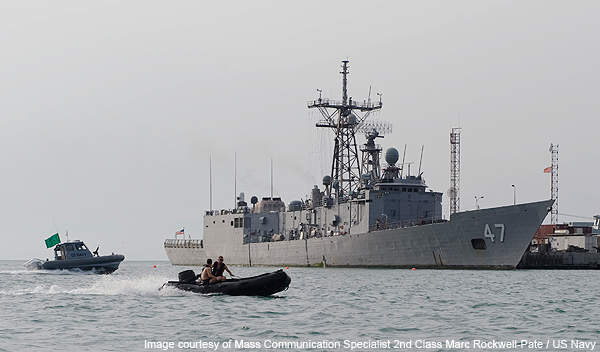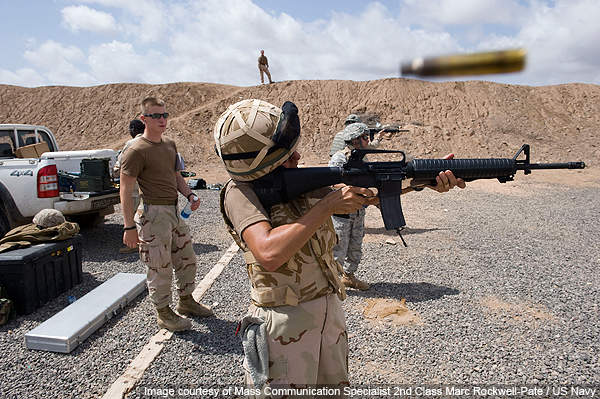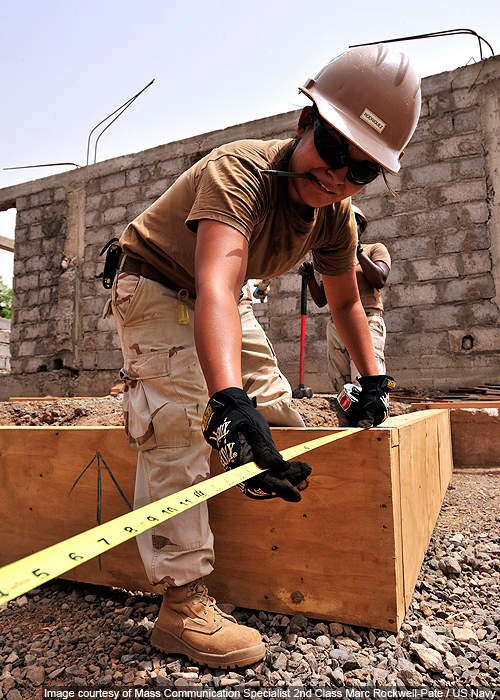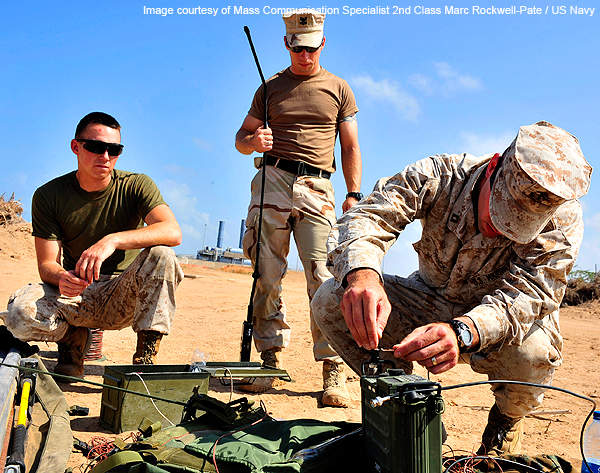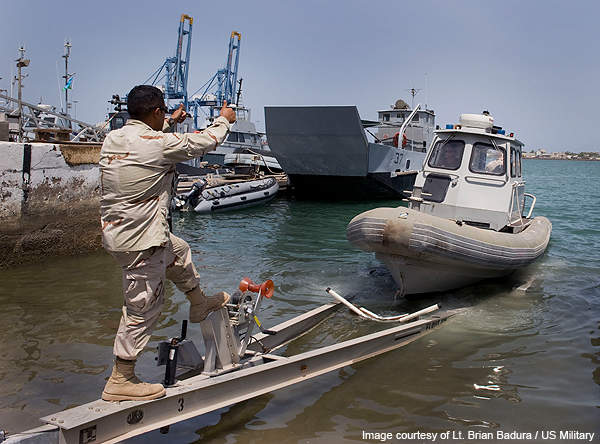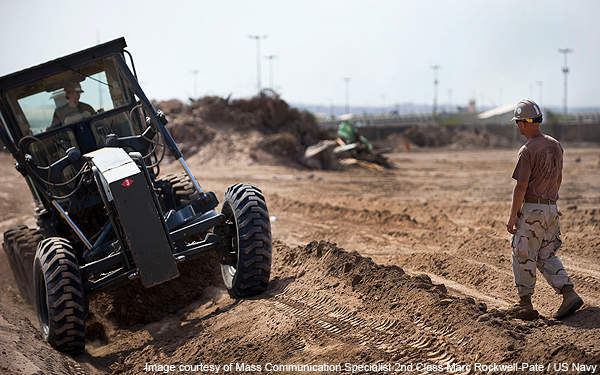Camp Lemonnier is an expeditionary base of the US military forces in the Republic of Djibouti, on the Horn of Africa.
The base is home to the marine-based Combined Joint Task Force-Horn of Africa (CJTF-HOA), which is the joint task force of the US Africa Command (USAFRICOM). The Horn of Africa includes Kenya, Ethiopia, Sudan, Somalia, Eritrea and Yemen
The US established CJTF-HOA at the base after the 11 September 2001 attacks. Several hundred US troops and multi-national coalition forces have been stationed at the base since 2002. The forward deployed camp was established as the primary base to support Operation Enduring Freedom – Horn of Africa (OEF-HOA).
Camp Lemonnier, Djibouti (CLDJ) conducts training and operations for the host nations. Camp Lemonnier is the only base established by the US forces in Africa.
The camp is located to the south of the Djibouti-Ambouli International Airport airfield. The camp is also close to the Port de Djibouti. Both the facilities are used by the base as per an access agreement made between the Djiboutian government and the US Embassy in Djibouti.
Location and layout
The Djibouti base is strategically located astride the Suez Canal and the Indian Ocean passage at the entrance to the Red Sea. The total base spreads across about 590-acres. It is an important base for the US Marines and the western navies.
History
Named in the honour of General Emile-René Lemonnier, the camp was a former military barracks established by the French Foreign Legion. It was later operated by the Djiboutian Armed Forces and then left unused for many years.
Following the September 11 attacks, the US wanted to establish a forward operating base in the desert areas of eastern Africa to counter Islamic extremism.
In 2001, the camp was leased to the US on a long-term basis for the support of humanitarian, demining and counterterrorism missions. In October 2002, the marine-based organisation, CJTF-HOA was established at Camp Lejeune, US for this purpose.
The CJTF-HOA was deployed at Camp Lemonnier in Djibouti City in November 2002. The CJTF-HOA personnel were transported by the US Navy command ship USS Mount Whitney.
Facilities at the base, such as living areas, concrete pads and maintenance facilities, were renovated or reconstructed by US Army Bravo Co. 46th Engineer (CBT) (HVY). The CJTF-HOA operated from Mount Whitney during the project.
Operations
The operations of CJTF-HOA at the renovated expeditionary base began in May 2003. It focuses on conducting unified actions with the joint coalition operations for security, stability, conflict prevention and civil affairs in the Horn of Africa.
The camp also supports the Defense Fuel Supply Point (DFSP) at the Port of Doraleh by refuelling US and coalition ships for Maritime Security Operations (MSO). Pacific Architects & Engineers (PAE), a subsidiary of Lockheed Martin is responsible for the administration of support operations and camp facilities such as dining, billeting and laundry services for working contractors and personnel.
Construction
In January 2007 the US announced its plans to expand the base from 88-acres to about 500-acres for making it a long-term facility. Permanent housing units, called Containerised Living Units (CLUs), were built in long rows with other amenities.
The CLUville provides more durable berthing facilities for the camp population than tents. During 2007-2010, the other projects in Djibouti included 27 educational facilities, 27 medical and 19 essential services projects.
The Military Construction (MILCON) projects in 2010 included construction of an ammunition supply point, perimeter security fencing and paved roads in the interior. The expansion project also involved improvements to the fencing, replacement of the existing tents with additional billets, a new dining facility, the development of a network infrastructure system and other protection requirements. A reverse osmosis plant was constructed for supplying potable water to the camp in 2009.
Future development
The projects in 2011 will include a Telcon Facility, a general warehouse, a satellite fire station, the paving of external roads and a joint operations and headquarters Facility.
GeoEnvironmental Resources is the engineering consultant for the MILCON projects.
Garrison facilities
The Commander, Navy Region Europe, Africa, Southwest Asia (CNIC) is responsible for all the operations such as expansion, logistics and maintenance of Camp Lemonnier.
The camp has about 1,650 CJTF-HOA personnel and coalition forces with a total population of about 3,000.
The CJTF-HOA forces provide security to the base. The base houses the US Navy Seabee battalion, US Marine Security Forces, US Army units, 137th Infantry Regiment, Kansas Army National Guard unit and the 2nd Combined Arms Battalion.
The several aircraft detachments at the camp include the US Air Force’s 449th Air Expeditionary Group, a C-17 Globemaster III detachment, a USAF HC-130 detachment, a US Navy P-3 detachment and the US Marine heavy-lift helicopter (CH-53) detachment.
The garrison facilities include a Naval Exchange (NEX), a fitness centre, a chapel, Greenbean Coffee, air-conditioned living quarters, dining facilities and a swimming pool.
Air facilities
In December 2009, a $12m new apron called the Enduring Ramp was constructed at the CLDJ. The 219m x 126m apron provides space for three C-130 Hercules aircraft, a CV-22 Osprey aircraft parking pad and can support the C-5 Galaxy and C-17 Globemaster III parking.
In 2010, the MILCON projects included a new $15.4m, 1,700m asphalt taxiway at the camp and improvements to the existing signage, asphalt shoulders, drainage structures, striping and airfield lighting.
Communications
Hanson installed the US Navy base communications facilities in Camp Lemonnier.
It has thrice the bandwidth of the USS Mount Whitney for faster communication and the ability to link with more coalition partners.

